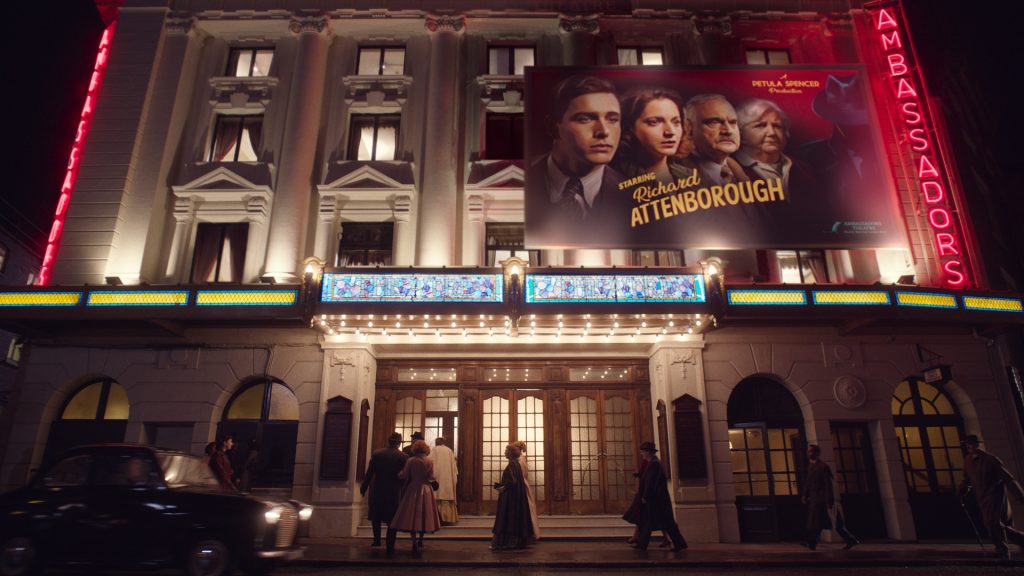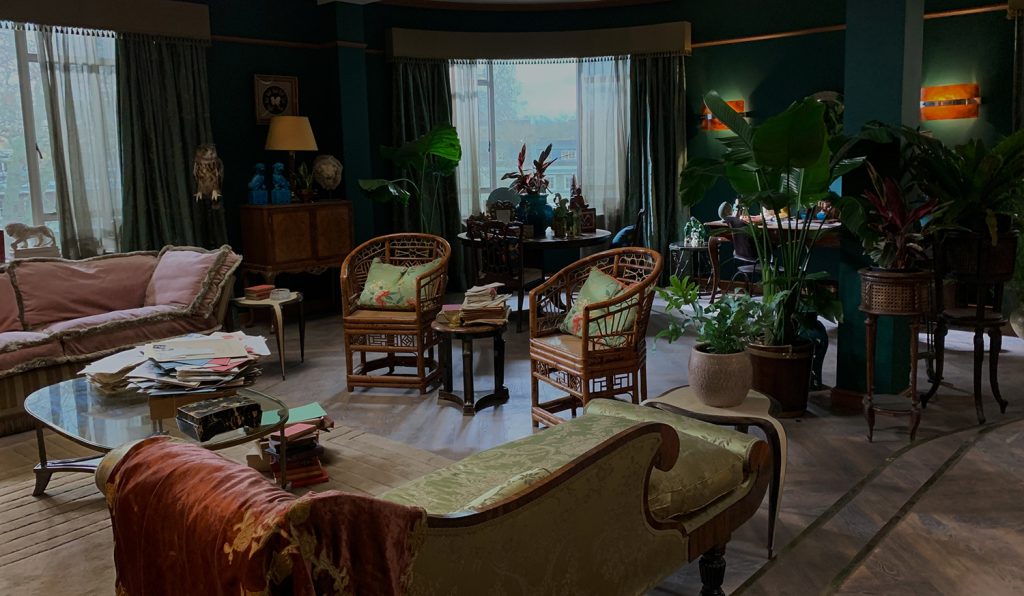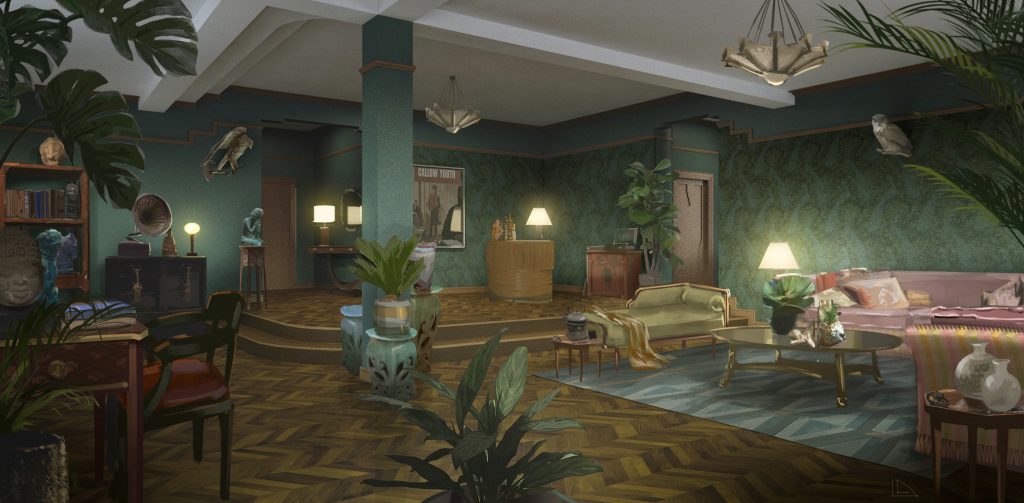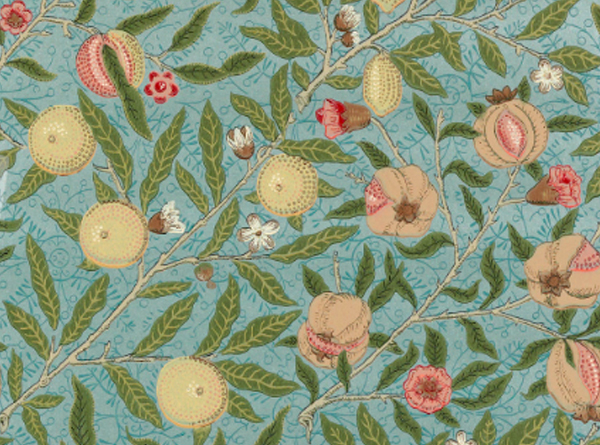Designing See How They Run, a film about a play about a whodunnit
In March 2020, London’s theatres closed their doors due to lockdown. We all despaired. What use is a closed theatre? To a film crew, quite a lot of use it transpires!
Filmed in real theatres and hotels during the Covid pandemic, See How They Run is a murder mystery set against the backdrop of arguably the world’s most famous murder mystery, The Mousetrap. We talked with Production Designer Amanda MacArthur about her approach to designing a film about a play about a whodunnit.

See How They Run: The Story
In the West End of 1950s London, plans for a movie version of the long-running play The Mousetrap come to an abrupt halt after the film’s Hollywood director is murdered. When world-weary Inspector Stoppard (Sam Rockwell) and eager rookie Constable Stalker (Saoirse Ronan) take on the case, the two find themselves thrown into a puzzling whodunit within the glamorously sordid theatre underground, investigating the mysterious homicide.
A clause in a contract provides the inspiration
When Producer Damian Jones (Lady In The Van, The History Boys, Welcome to Sarajevo, Goodbye Christopher Robin) was undertaking research into stage plays that might work as a movie, The Mousetrap – the famous play that’s been running for no less than 68 years – stood out.
During his investigations on available rights, he unearthed why it had never been made into a film. A very successful Oscar winning producer at the time, John Woolf (The African Queen, Day of the Jackal, Olivier!) had optioned the rights. Jones explains, “There was one clause in the contract which said, ‘you can make the movie six months after the play closes’, but of course it never closed”. So, he decided to create a whodunnit and sabotage the play of a whodunnit. A world within a world, if you will.

Designing See How They Run
The film is set during the celebration of the play’s 100th performance, and while the mood is postwar, pre-sexual revolution Britain, the artists behind the camera took a playful approach to the representation of the 50s.
Jones looked to Production Designer Amanda MacArthur to bring his, and Director Tom George’s, vision for the design of the film to life. “Right from the get-go, Tom and I were on the same page as to the look and feel for the film. As it was set in 1953, only eight years after the war, we wanted the world of Inspector Stoppard and Constable Stalker to reflect that – parts still bombed out, others under construction” MacArthur told us.
Amazingly, the theatre district in the West End had already been rebuilt by 1953. “We wanted to show it as glamorous, exciting, colourful and jewel like. Clubs and restaurants bloomed, and café culture had just started up” she explains.

As the 50s were a time of great change, MacArthur wanted to explore the different architectural and interior styles that were prominent in that era: “We used these in the architectural detail, the furniture, the styling and in the graphics”.
A composite of three theatres were used to make up the main venue we see in the film. Taking cues from the Dominion Theatre‘s beautiful front-of-house, dark red became one of the main colour themes throughout: “We took that style and we moved it beyond the theatre” says MacArthur.
The team created almost seventy dressed film sets across London theatres, music halls, film studios in Twickenham and Bovingdon, a school, a café, two pubs, a restaurant, Freemason’s Masonic lodge, Windsor Great Park and a stunning London property once owned by Richard Attenborough.
For MacArthur, the look is early 50s with a modern slant: “We weren’t being absolutely period specific, we were trying to give the mood of it but we were adding more colour and variety, avoiding that sepia brown look with all the other trappings.”
Agatha Christie’s Manor House

The manor house where Agatha Christie resides in the film, is Arts and Crafts style with the feel of William Morris’ Red House, and Morris wallpapers and fabrics were incorporated into the film sets.

The exact same Morris & Co ‘Golden Lily’ wallpaper as seen in Agatha’s house in the film is available via the Film and Furniture store.


The wallpaper on Agatha Christie’s staircase is ‘Artichoke’ (in the Wine colourway) by Morris & Co and is available from Wallpaper Direct.
The manor house living room was built in a studio in Bovingdon, with a snow-covered forest outside the window.

“This extended into a much larger forest when a storm blew in and we were unable to film the dream sequence outside in Black Park. Over the course of a weekend, a hundred and fifty trees were hung in the studio by a wonderful group of theatre riggers – who’s theatres were black because of the Covid lockdown. Snow was laid and we transported the art deco brass bar we made for The Mousetrap party into the middle of it. The lit-up bar and the silent trees gave the scene a surreal feeling” MacArthur shared with us.

The Mousetrap theatre set mirrored the approach to the manor house set and was built in London’s Old Vic Theatre. “It was the Manor house style dismantled, made theatrical, and built on a racked floor. The carved stone fireplace and window were used on both sets”.
In this context, the Morris & Co wallpaper used in the manor house set was hand painted to achieve a bolder and more scenic feel.
MacArthur, who has previously worked in in theatre design, saw her skills come full circle in designing See How They Run: “It was wonderful to go back to my roots in theatre design. We had to dress the backstage area of the theatre to look like 1953, to cover the modern computerised flying systems and machinery. We built corridors, rope flying rigs, painted scenic backings, and a totally imagined snow machine”.
Mervin Cocker Norris’s apartment

The apartment exterior of writer Mervin Cocker Norris (played by David Oyelowo) was filmed at Florin Court in Charterhouse Square, Clerkenwell, in central London, “a fabulous curved streamlined, moderne, art deco building” comments MacArthur. This apartment block was made famous as the Whitehaven Mansions home of the fictional Belgian detective Hercule Poirot.

The apartments in the Florin building were too small to film in and where therefore created on a stage at Bovingdon. Huge convex and concave windows overlooked a 40-metre translight (a large illuminated film backdrop) of a London square – a manipulated photograph which took the scene back in time to 1953.

This apartment film set was one of MacArthur’s favourites. It features deep green walls, emerald tiles, a Victorian copper bath, a tiki bar, chinoiserie cabinets, sofas and exotic leafy plants.

An eclectic collection of sculptures, objets d’art, Asian pottery, bronze figurines and taxidermy dressed the flat of a character who travels the world.
Find Art Deco furniture on Etsy or eBay.
The Savoy Hotel
The art deco interior of London’s real Savoy Hotel was redressed with a dark exotic mood to reflect the character of the villainous American movie director who was staying there.
McArthur comments, “The Savoy Hotel was a godsend. That’s one of the most amazing things about working through this COVID period is that hotels, theatres, everything has been closed so we feel incredibly lucky. I don’t know if we’d been able to do this film to this degree of production value without that.”
Set Decorator Celia De La Hey found some beautiful black and gold chinoiserie screens, an ebonised serpentine bed and a black horsehair William IV sofa. Antique cabinets and the bed feature exotic Boulle inlays of red tortoise shell and brass. This room was finished with dark damask curtains and silk fabrics.
De La Hey adds “You have some latitude with some aspects of the design, like some of the furniture is not strictly 1950s but other aspects of it, like technology, have to be. So, it’s interesting knowing where you draw the line and which bits you’re going to be really authentic with and which bits you have some creative freedom with.”

Saoirse Ronan comments, “It was kind of bittersweet to film [in London theatres) because those stages are usually so full of life. The film is a celebration of London, too, and how rich a city it is and has always been, and how there’s so much grit but also grand beauty.”
See How They Run is in cinemas now.
The real live West End murder mystery The Mousetrap raised its curtain once again in May 2021. Get tickets to see the worlds longest running play.
Amanda MacArthur is repped by Casarotto.

















 Facebook
Facebook Twitter
Twitter Instagram
Instagram Pinterest
Pinterest RSS
RSS